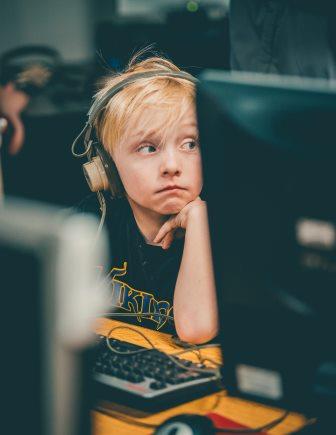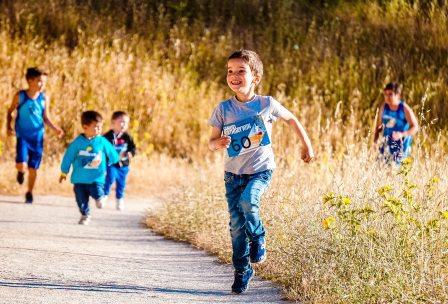EMMA PROWSE
Dr Emma Prowse is Clinical Psychologist at the Children’s Cancer and Haematology Service, John Hunter Children’s Hospital, Newcastle, NSW
According to the World Health Organisation, ‘without mental health there can be no true physical health’. This is important to consider when a child’s mental health or emotional wellbeing is complicated by a chronic illness such as haemophilia.
Children with haemophilia and other bleeding disorders are faced with a unique set of challenges, in addition to the typical challenges associated with growing up.

Developmentally, we would expect children and adolescents to be growing and undergoing physical changes, developing friendships, finding their place in the world and taking risks. However, a child with haemophilia carries a higher level of risk, leading to restrictions in activities that could increase the chance of injury leading to a bleed. Children with more severe bleeding disorders often feel excluded due to being unable to play contact sports, such as Rugby League or AFL, with Australian haemophilia management guidelines recommending that noncontact sports should be encouraged in preference to contact sports. Given the importance of sport in our Australian culture, this often has social ramifications, and can even lead to children not being invited to birthday parties if there is a perceived risk.
Children and adolescents may feel excluded from or feel different from their peers, whether this is due to stigma and/or limited understanding about the illness. Teachers may experience an increased sense of responsibility for children with bleeding disorders, which may lead to further social exclusion. The child may also miss days of school due to treatment or medical appointments; meaning that they have reduced opportunities to socialise or fall behind academically.
Parents are often required to be more vigilant, particularly of an active child, leading to hypervigilance, stress or fatigue. Children feeling that they are being treated differently to their peers can lead to increased conflict between parents and children, and can also lead to rule-challenging behaviours and other behavioural concerns.
Additionally, given the infusion-based nature of prophylaxis treatment administration for bleeding disorders at such a young age, and that young children are less likely to understand the need to sit still during procedures, have more energy than adults and generally have smaller veins, children are at a much higher risk of experiencing pain during medical procedures and are therefore at risk of developing develop procedural anxiety and needle phobias or experience trauma related to procedures.
Finally, young women with bleeding disorders face unique challenges, impacting on their psychological wellbeing. It is hard enough being an adolescent girl in today’s society, with the influence of social media and pressures to meet unrealistic body ideals without the added embarrassment and discomfort associated with heavy menstrual bleeding.

Children are children – they explore, they get dirty, they get hurt. Even children with haemophilia!
Children need opportunities to explore and take risks in a safe and measured way. Talk to your specialist team about sports that are safe for your child/young person. Sport is not only good for your child’s physical wellbeing, but it will also allow opportunities for friendships, the development of social skills and increased confidence. Ask questions about prophylaxis and have a plan in the event that your child is hurt.
School is important: it not only provides opportunities for academic development, but also allows social and personal development. Try to minimise the amount of school missed. This will reduce the impact of the bleeding disorder on the child’s self-concept. Rather than being a chronically ill child with a bleeding disorder, they become a child who likes science and playing with friends, but just happens to have a bleeding disorder.
Emotional awareness and communication: talk to you child about their day and their emotions. Encourage the development of a vocabulary around a range of emotions. Help your child to feel that their emotions are OK.
When to get help: Look for signs that could indicate decline in emotional wellbeing. These include but are not limited to, changes in sleep and appetite, withdrawal from friends and previously enjoyed activities, complaining of headaches and stomach aches, increase in irritability or anger, fatigue, increase in rule-challenging behaviours, getting into trouble at school, difficulties concentrating or decline in school grades.
If you are worried about the emotional wellbeing of your child or young person, speak to your treating team or GP. Children may be eligible for psychology sessions under a Mental Health Care Plan and most schools have access to a School Counsellor. Support is out there!
Berk LE. Child Development. Pearson international edn; 7th edn. Boston: Pearson Education, 2006.
Varni JW, Seid M, Rode CA. The PedsQL™: measurement model for the pediatric quality of life inventory. Medical Care 1999;37(2):126-139.
Young NL, Wakefield C, Burke TA, Ray R, McCusker PJ, Blanchette V. Updating the Canadian haemophilia outcomes-kids life assessment tool (CHO-KLAT Version2.0). Value Health 2013;16(5):837-41.
World Federation of Hemophilia. Guidelines for the management of haemophilia. Montreal: WFH, 2012.
Haemophilia Foundation Australia acknowledges the Traditional Owners and Custodians of Country throughout Australia, the land, waters and community where we walk, live, meet and work. We pay our respects to Elders past and present and extend that respect to all Aboriginal and Torres Strait Islander peoples.
Sign up for the latest news, events and our free National Haemophilia magazine